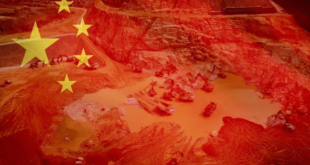The Soviet Army invaded Afghanistan in December, 1979 and withdrew, exhausted and demoralized, 10 years later. In Moscow a joke had long circulated: “Why are we still in Afghanistan?” Answer: “We are still looking for the people who invited us.”
The same is true for the Americans and NATO who are now moving through the exit door. They came to obliterate Al Qaeda after 9/11, 2001.
There was certainly no invitation issued by the Afghani government, then controlled by the militant Taliban. The US was angry that Afghanistan sheltered Al Qaeda, led by Osama bin Laden, and didn’t have the time of day or desire to discuss an invitation.
After an air and ground campaign the outsiders savaged Al Qaeda’s fighters. Its rump, including bin Laden, fled to the barely accessible mountains of Pakistan. Ordinary Afghans had never really liked al-Qaeda and they certainly never equated their home-grown Islamist movement, the Taliban, with the Arab-led extremists.
Yet the US and its allies were not prepared to declare victory and leave. They changed the goalposts and stayed on to confront the Taliban, determined to drive them into the ground and to nurture the creation of a democratic government. But there was still no invitation from the people at large. Only after the longest war in American history are the US and NATO now leaving. The tail is between their legs as diplomats, chosen Afghanis and aid people scramble on to the military planes packed to the gills. Some Afghanis who have supported the NATO and American-implanted government have been filmed clinging to the wheels and wings of an enormous transporter as it taxied down the runway.
As Jonathan Steele writes in his seminal book, “The Ghosts of Afghanistan”, “The principal ghosts are the dead on every side. In 35 years of unfinished civil war, made worse by foreign intervention, close to 15,000 Soviet dead, over 1,500 Americans, nearly 400 British and 500 from other countries. Above all, the sons and daughters of Afghanistan itself: some 20,000 troops and as many as two million civilians.” Hundreds, if not thousands, of aid workers have also been killed.
American involvement began with President Jimmy Carter’s decision, fashioned by his National Security Advisor, Zbigniew Brzezinski, to send in covert military aid to the mujahedin that were trying to end the Soviet occupation. They did. Brzezinski’s ambition was, in his words, “to give the Soviets their Vietnam” and to undermine the political stability of the USSR. Seen from this vantage point, Brzezinski’s strategy was a brilliant success.
The victorious mujahedin, always a fissiparous group, despite US and Saudi Arabian military aid, were eventually dominated by the Taliban who imposed a peace that lasted until the massive bombing launched by President George W. Bush in the aftermath of 9/11. Then the Taliban was forced out of Kabul and has continued ever since to wage war with the Western invaders. Despite all the blows received from much superior forces it has emerged victorious. The Taliban always said: “The Americans have the watches, we have the time.”
As the Westerners leave, we have to recognize that some good has been done thanks to Western governmental and NGO aid. Afghanistan now has some good roads, electricity, many more hospitals, clinics and schools, (including girl pupils), with a fast-declining infant mortality rate, increased longevity, and much increased economic activity. But no one can honestly say that it was right to achieve all this by wielding the sword. It could have been done and should have been done by working with a Taliban-led government. This work should continue.
The US leaves Afghanistan in a better state than it did Vietnam or Iraq. However, it took the long road round the mountain—20 years of warfare to do what could have been done with a good, well thought out, aid program, in half the time. (I’ve seen the speed and efficiency of a fast aid program at work in Uganda after the fall of President Idi Amin who had devastated the country.)
Afghanistan’s future, to say the least, is unclear. The new Taliban-led government must face the fact it has to forge a kind of power-sharing deal with the secularized middle class of Kabul.
The country is awash with guns. It has been traumatized by war. The omens are not good.
Afghanistan remains one of the world’s messes. If only the US and NATO had limited themselves to destroying Al Qaeda, Afghanistan would have remained an introverted Islamist backwater, slowly but steadily developing with outside aid, capable of harming no one but itself.
 Eurasia Press & News
Eurasia Press & News



